YOUR SHOPPING CART IS EMPTY
A schedule with every hour marked “urgent red” as a metaphor for our demanding daily lives
filtrar resultados
A STORY ABOUT LIFE by Antonio Ortiz.

A schedule with every hour marked “urgent red” as a metaphor for our demanding daily lives
This is a story about life, about our day-to-day. About how new technologies, “always being connected”, our goals and plans determine every next step we take, erasing what is - or what should be - the essence of our daily lives: living. Our daily routes are designed and logged. We are chasing KOMs. We let Google Maps guide us. Even our mobile phones know when we are going to get home before we do after a bike ride. And what if we just went out for a pedal?
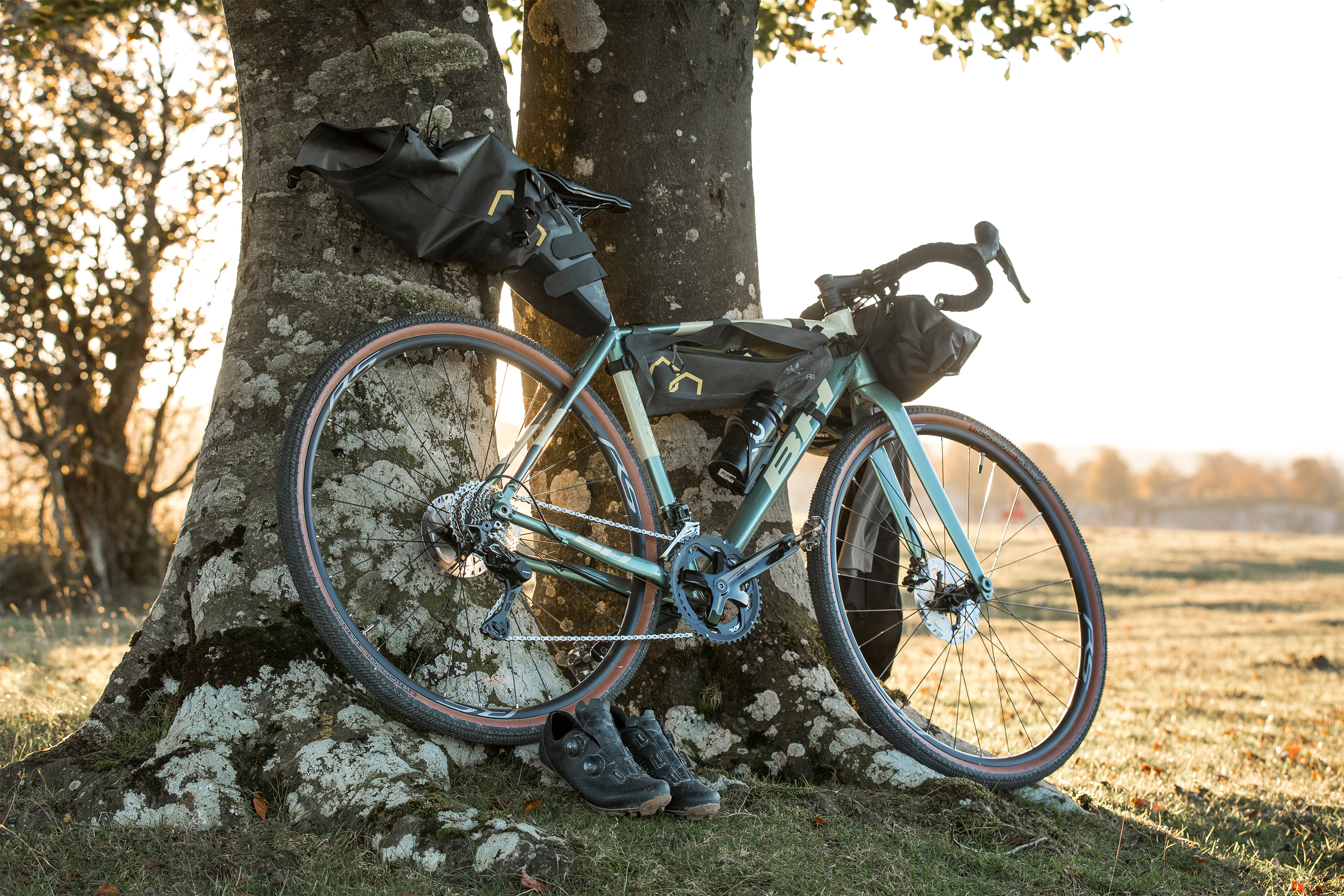
Going out on a bike - on a gravel route - as a microcosm of life
We silently admire the people who decided to pursue their dreams, forgetting their fears. “They're brave”, the emotional part of our brain thinks. “Irresponsible”, responds our frontal lobe. There are always good reasons for continuing along a tried and tested path. The right path. But, what if we found a reason not to do it? Fear of the unknown, routes marked and found. Exploring. Pushing our limits and discovering things for the first time. Enjoying ourselves. This story begins with that pedalling which completely immerses us in the moment, that makes us forget about fear and time. The schedule at the beginning of our story has now been left at the bottom of a drawer. Reasons for not agreeing with preconceptions. We are looking for a new adventure, to forget about our daily routine

Our adventure begins in Estella. Two riders - two friends - at a crossroads where all paths are a good option, each opening up a perfect route before our eyes. Getting lost to find yourself. The Urbasa Natural Park is accompanying us on the journey. But before we continue, we have to introduce the hero of our story. A name synonymous with cycling and a love of two wheels. The signature of a very special author. Where would Antonio Ortiz be without cycling? Or should we ask, “where would cycling be without people like Antonio Ortiz”?

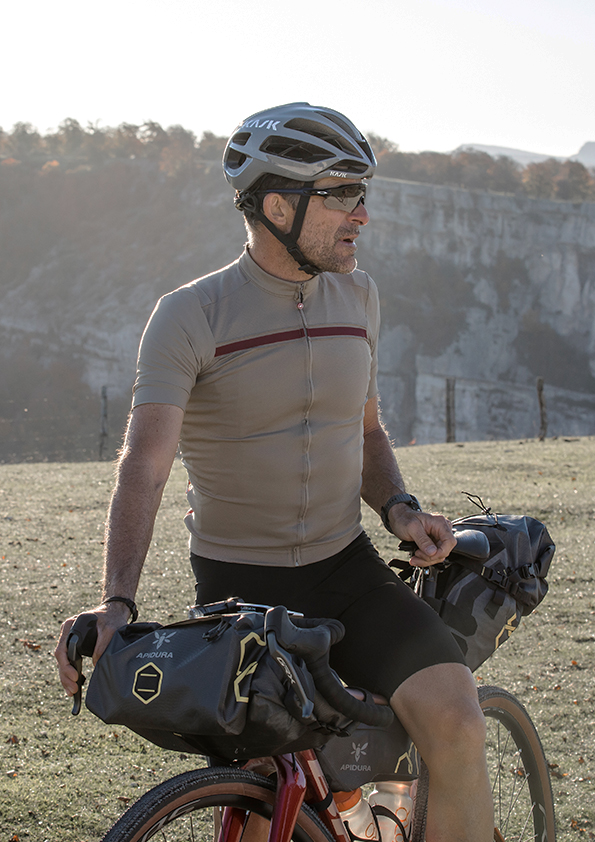
He competed (and won) when 26” wheels were the only option and disc brakes, tubeless tyres and telescopic seat posts were little more than dreams in the minds of engineers. He discovered the best stage races on the planet while riding 29” bikes. He even knows about racing on an e-bike. If one thing defines Antonio Ortiz, it is his ability to adapt. Changing everything so that nothing changes. Years go by, bikes evolve, new types emerge but the ultimate aim of each pedal stroke is the same. To enjoy yourself. Ortiz has been able to enjoy the privilege of competing at the highest level, but also the pleasure of the more recreational and relaxed side of cycling. A balance that has allowed him to carry on pedalling with the same passion as when he started cycling decades ago.
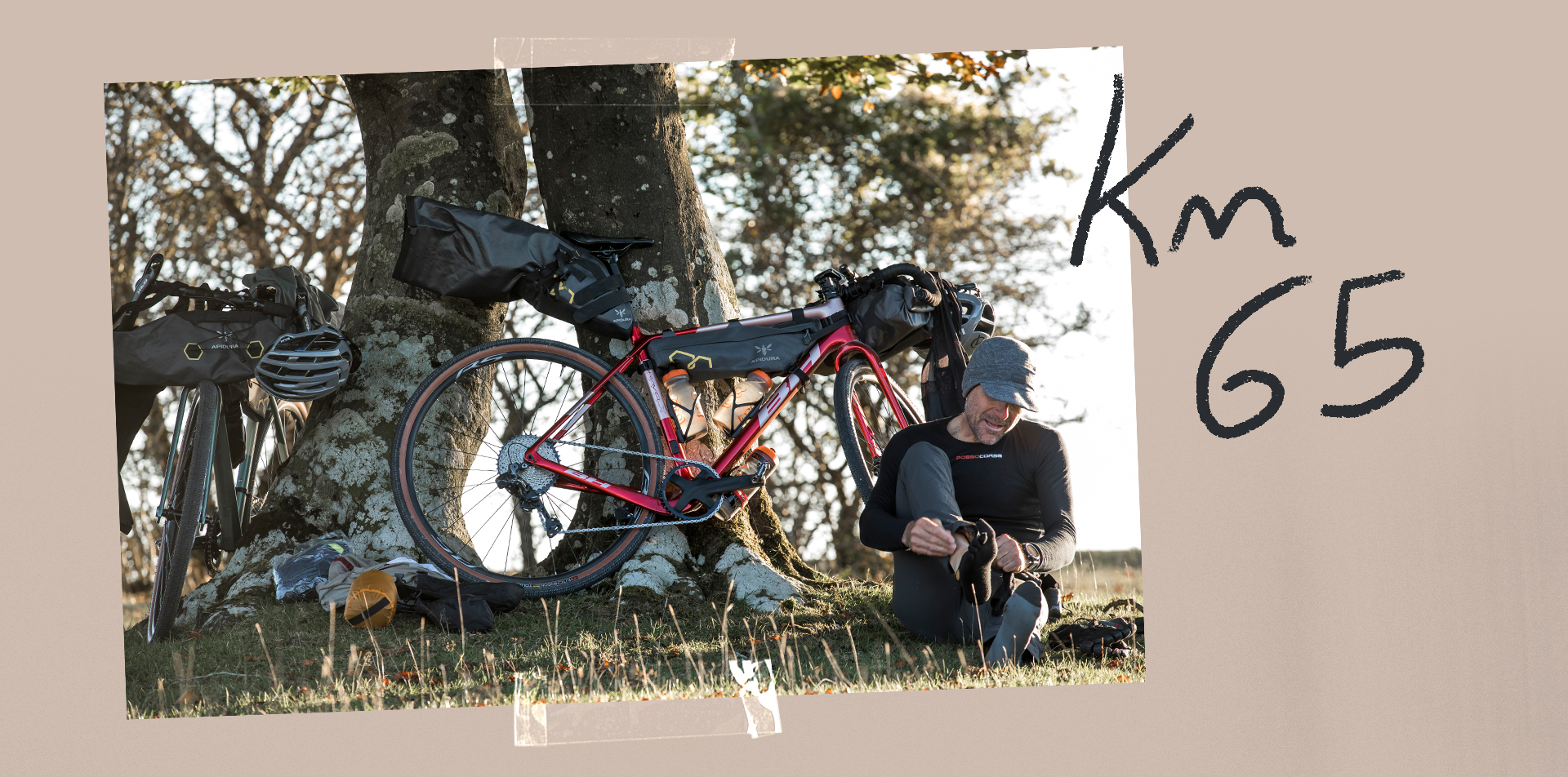
The plan? To share a good Idiazabal cheese, local sausages and nuts. And wait until sunrise as we share stories of journeys, past and future, snapshots of our lives. After completing the first 65 kilometres of our route, we found a perfect place to unpack our bags and bed down for the night. The evening sun casts its last few rays over the misty valley, imbuing it with shades of pink, yellow and orange. It is a pleasure to drink hot coffee as we watch this spectacle of nature. Pure visual poetry.
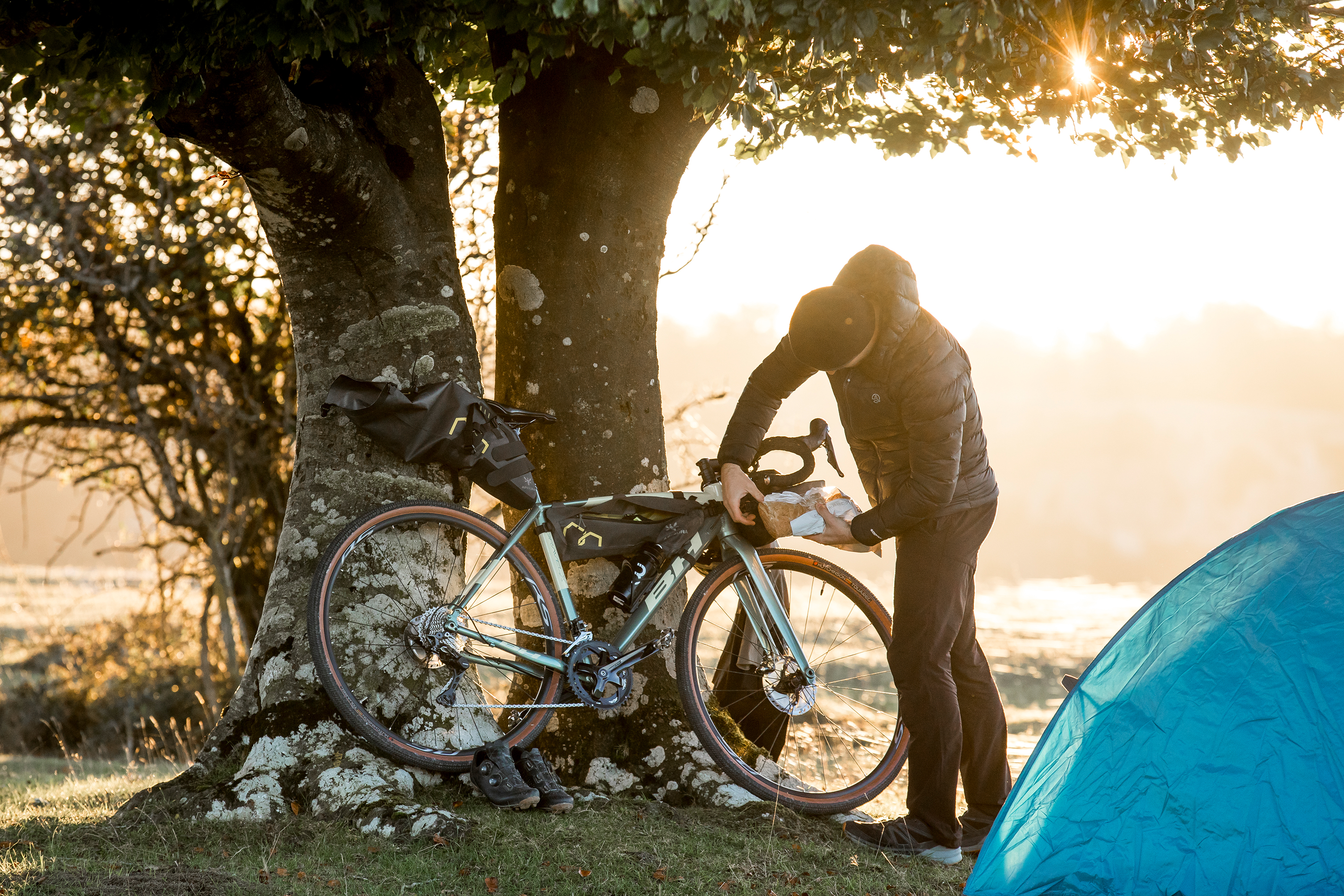
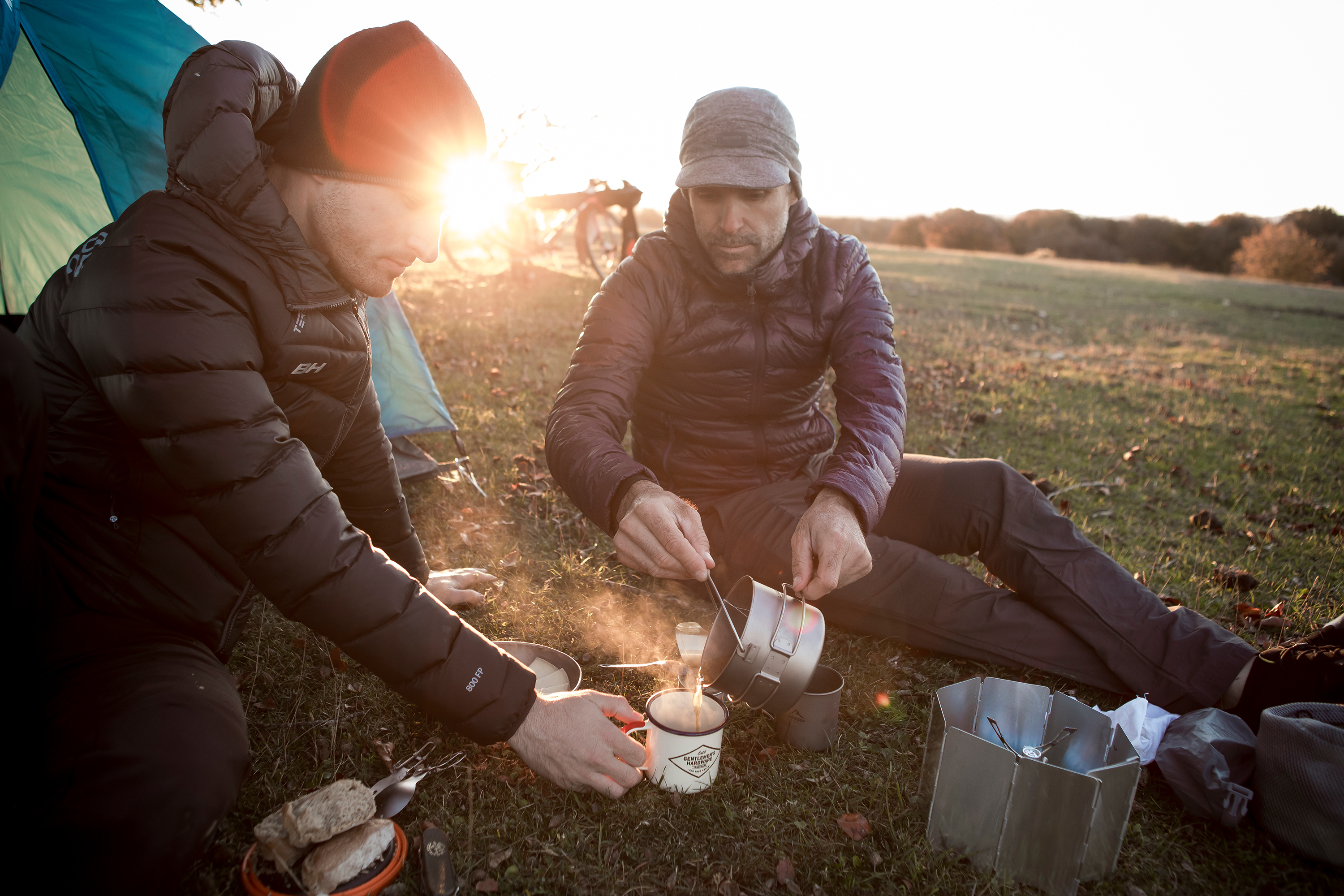

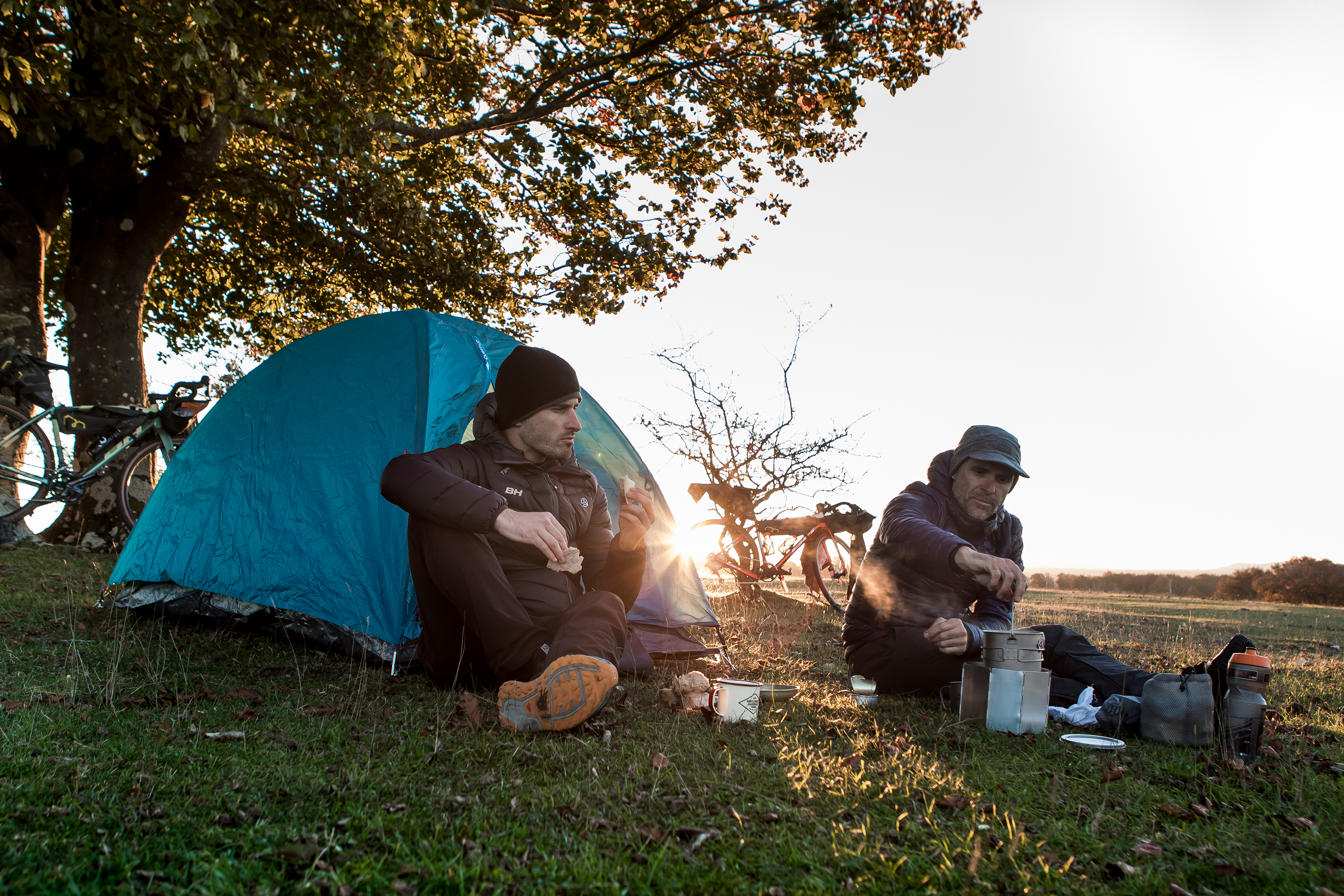
Few people have as broad a perspective of sport as Antonio, with the ability to capture what gravel means today. Is grave something new? Its name may be, but not its essence. Cyclo-cross and Andalusia, the land of the sun, are not terms normally used in the same breath, but they were the gateway to a new world: “As far as I'm concerned, the boom wasn't the start of gravel. It started in 2004, when I completed a whole season of cyclo-cross. And I had a cyclo-cross bike at home. In Andalusia, there was no such discipline, nobody talked about it. And the season clashed completely with my MTB calendar. Meanwhile, it was then that I gave gravel a go for the first time. With 32" tyres, the gear ratios back then and cantilever brakes… I started to hit the tracks with it. Honestly, this was the first time I dabbled with gravel.” He did not know it. Like many people at that time, but they were doing something that would go on to become a new kind of cycling. As a full blooded biker, he knows exactly why he took that step. “Going mountain biking on tracks was boring me, but riding my cyclo-cross bike on tracks did not. You leave the tarmac behind and your are in a natural environment that you like. Also, in those days, you had to be very careful with the bikes because they were useless at braking, the tyres were like something off a toy...a real adventure.”
Discover Antonio Ortiz's playlist for his bikepacking trips Spotify
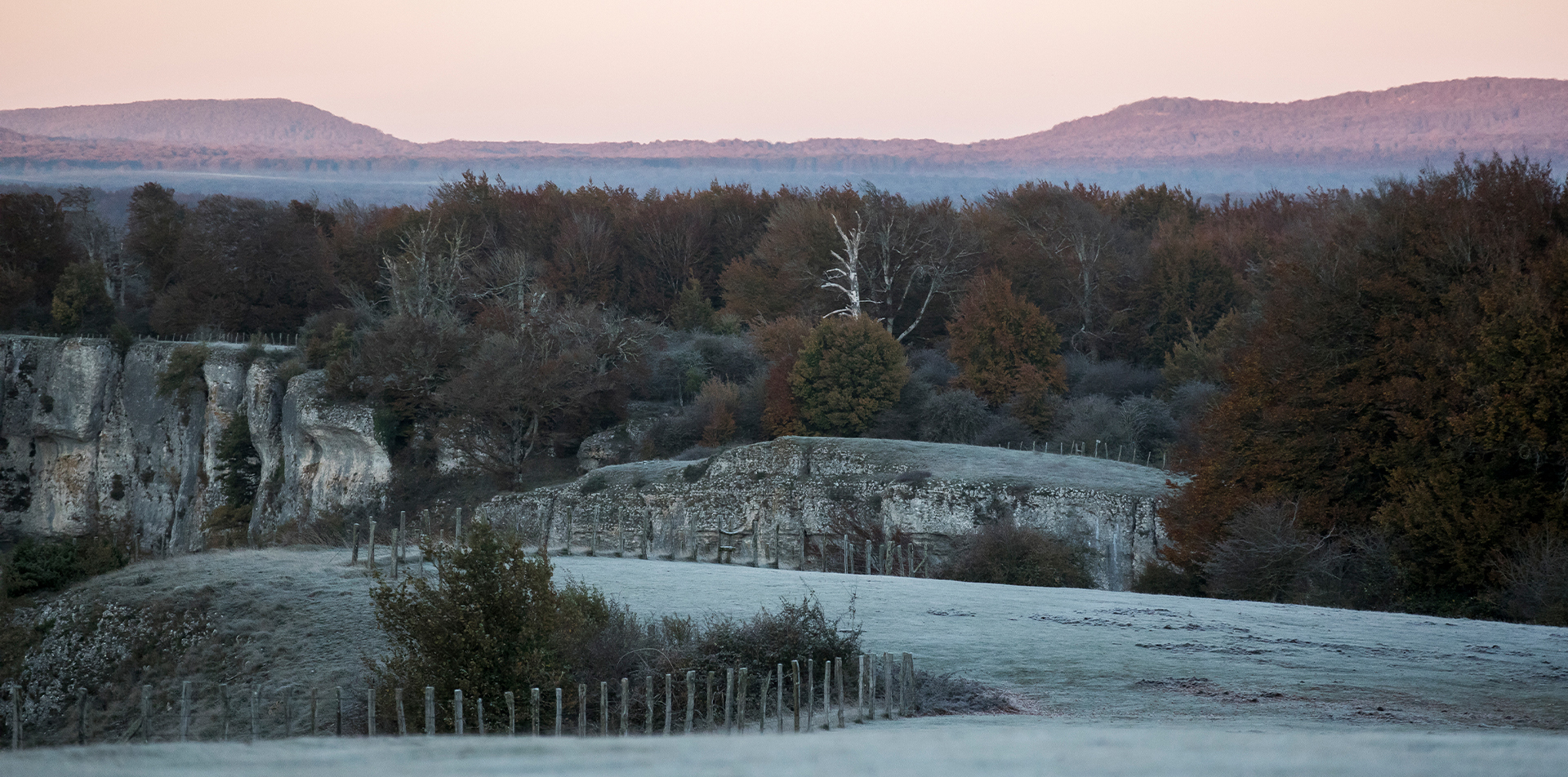
We rose early, with the first light of dawn. Dewdrops were still running down the tent and the green of the pastures had been replaced by a thin crystal-like layer, like the grey hairs ageing the young, sprightly grass of Urbasa. Time to resume our journey, feeling those nerves that give you a dry throat and make you dance on your bike, faced with the challenge of the unexpected. The scenery of the landscape is truly idyllic. Time seems to have stood still while the dawn light makes its way through the valley, casting a pinkish shadow on the plateau. Let's pedal!
I fell in love with the two sides of gravel cycling. The competitive side. Which reminds me of my first MTB races, where tracks dominated. And the adventurous side. Being able to go out on your bike and just enjoy yourself.
Antonio Ortiz —BH Bikes Ambassador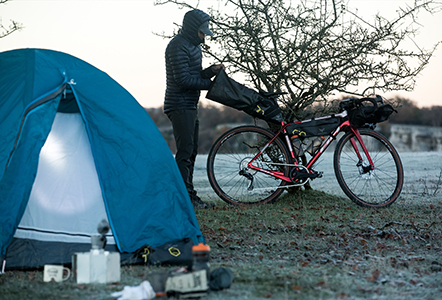

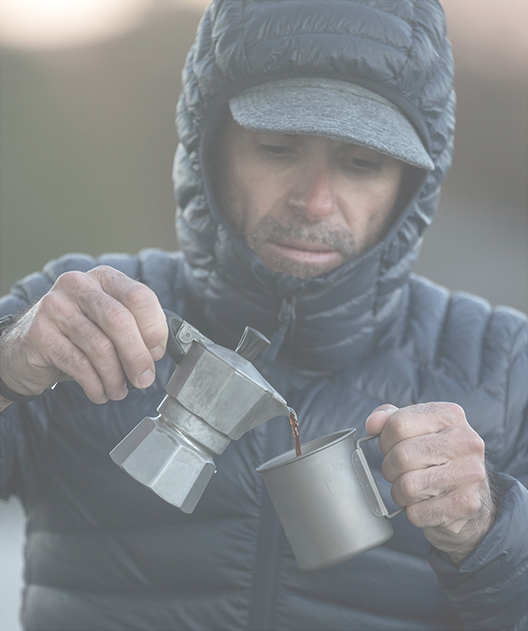

I fell in love with the two sides of gravel cycling. The competitive side. Which reminds me of my first MTB races, where tracks dominated. And the adventurous side. Being able to go out on your bike and just enjoy yourself.
Antonio Ortiz —BH Bikes AmbassadorThose adventures are the proof that gravel already existed as a concept a long time ago, for Antonio Ortiz and many other cyclists. Some of them went on the tracks with cyclo-cross bikes, others with road bikes and others with rigid, adapted MTBs. All that was needed was to create the right equipment for those cyclists who were not content with asphalt or who wanted to have fun in places that had become boring because of the advances in safety, stability and comfort in MTB. “Let's just say that I started riding on gravel in earnest when BH brought out its first gravel bike. Firstly, I tried a cyclo-cross bike with disc brakes. It was a huge qualitative leap. Wider tyres, the disc brakes… but it was designed for cyclo-cross. It still required some improvement for use on gravel. Until the Gravel X arrived. That's when I raised my hand to BH and said “I want one”.
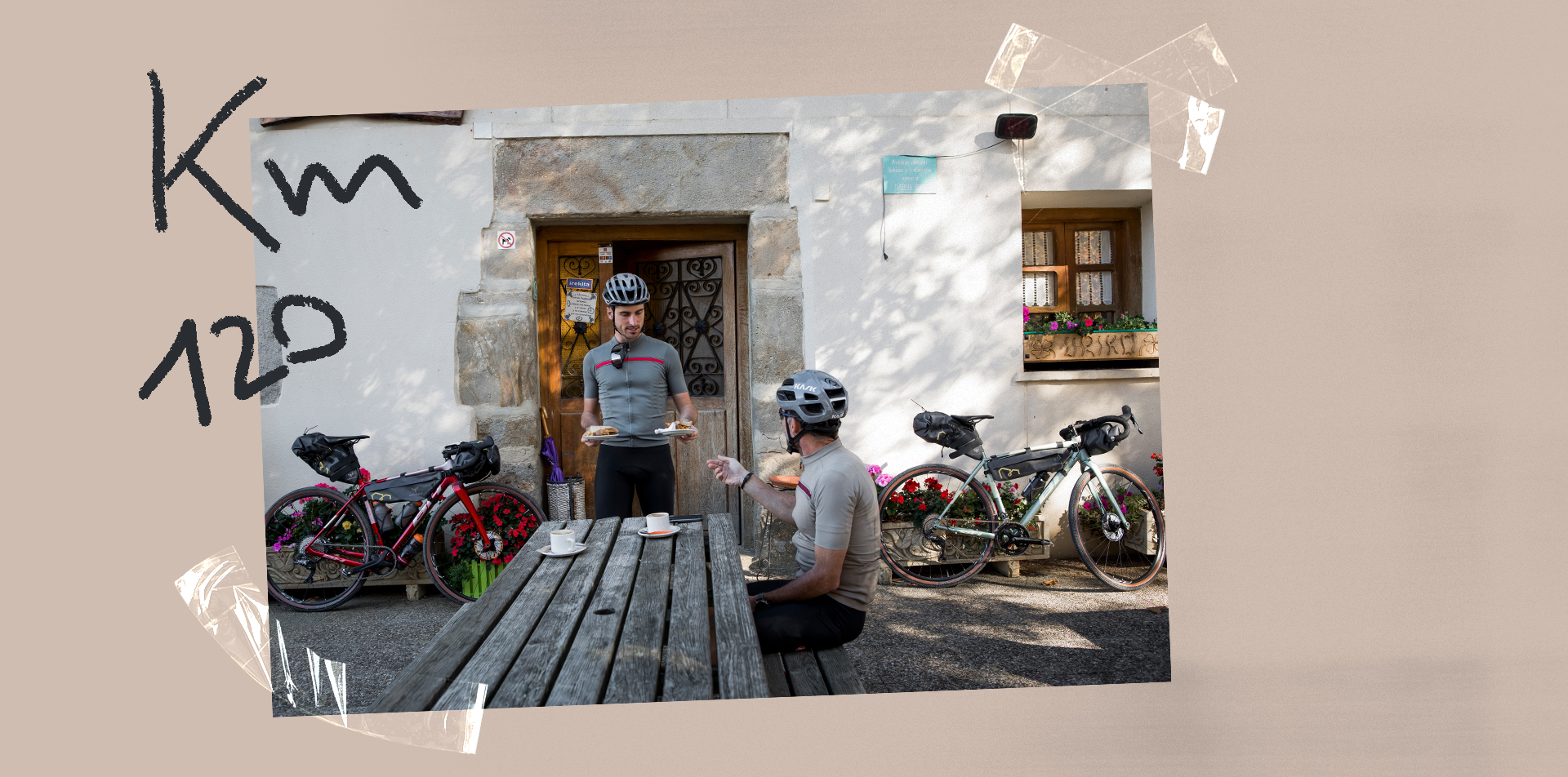
With our lungs rested and our stomachs sated by the finest feast, which just so happened to be an omelette sandwich, we got back on the track. There is no better way to give your legs an energy boost. We continued the day by heading towards Alava. The original idea had been to complete a circular route around Tierra Estella. But the weather and our spirits made us continue along the track and head through Sakana valley and the Alava plains. The path continued to offer us beautiful scenery, a valley that is full of life and history and, as if that were not enough, the sky had done us a good turn and offered us all of the beauty of this land, with a cloudless view. How many places do you know where you can enjoy such an open horizon without a town in sight?

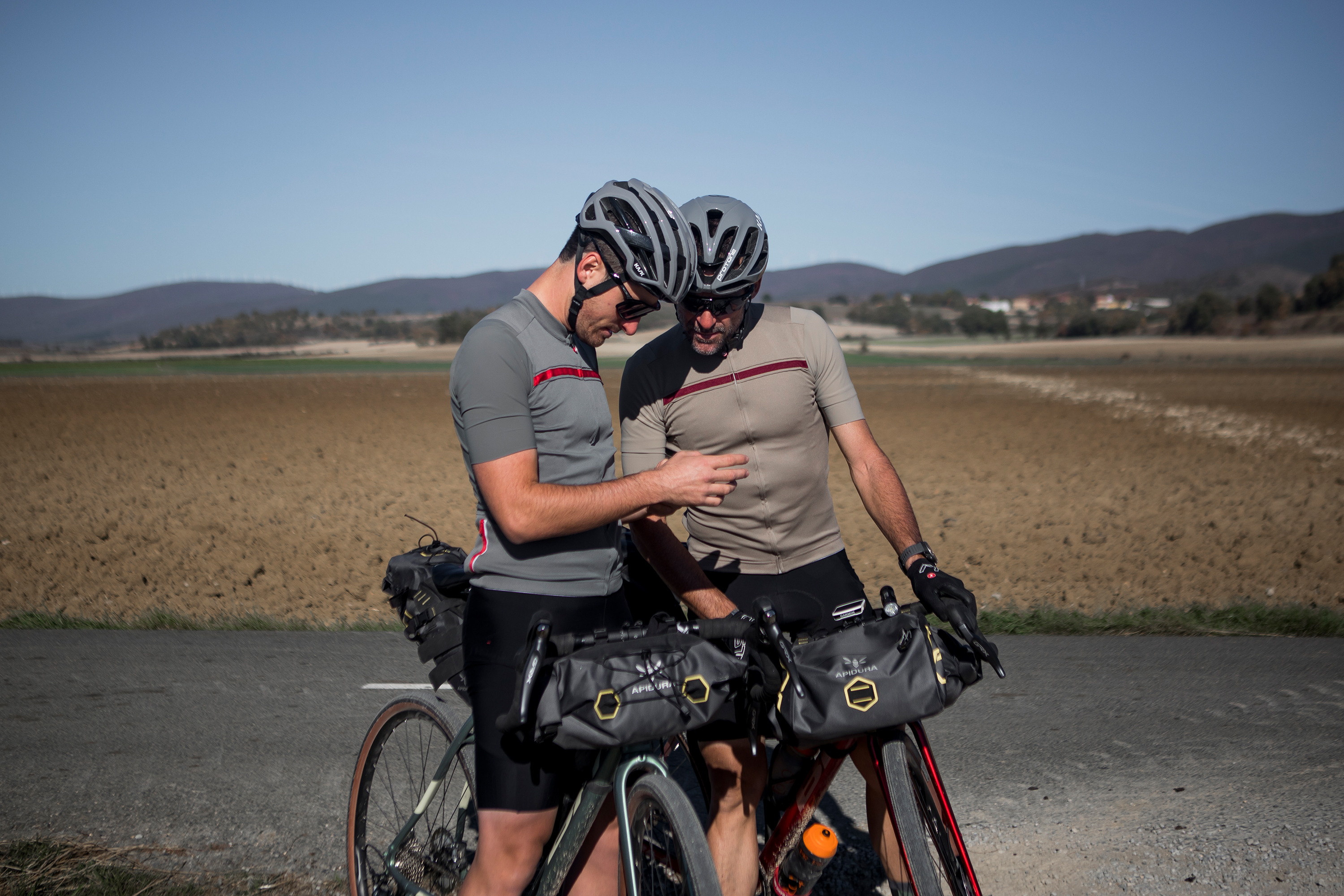
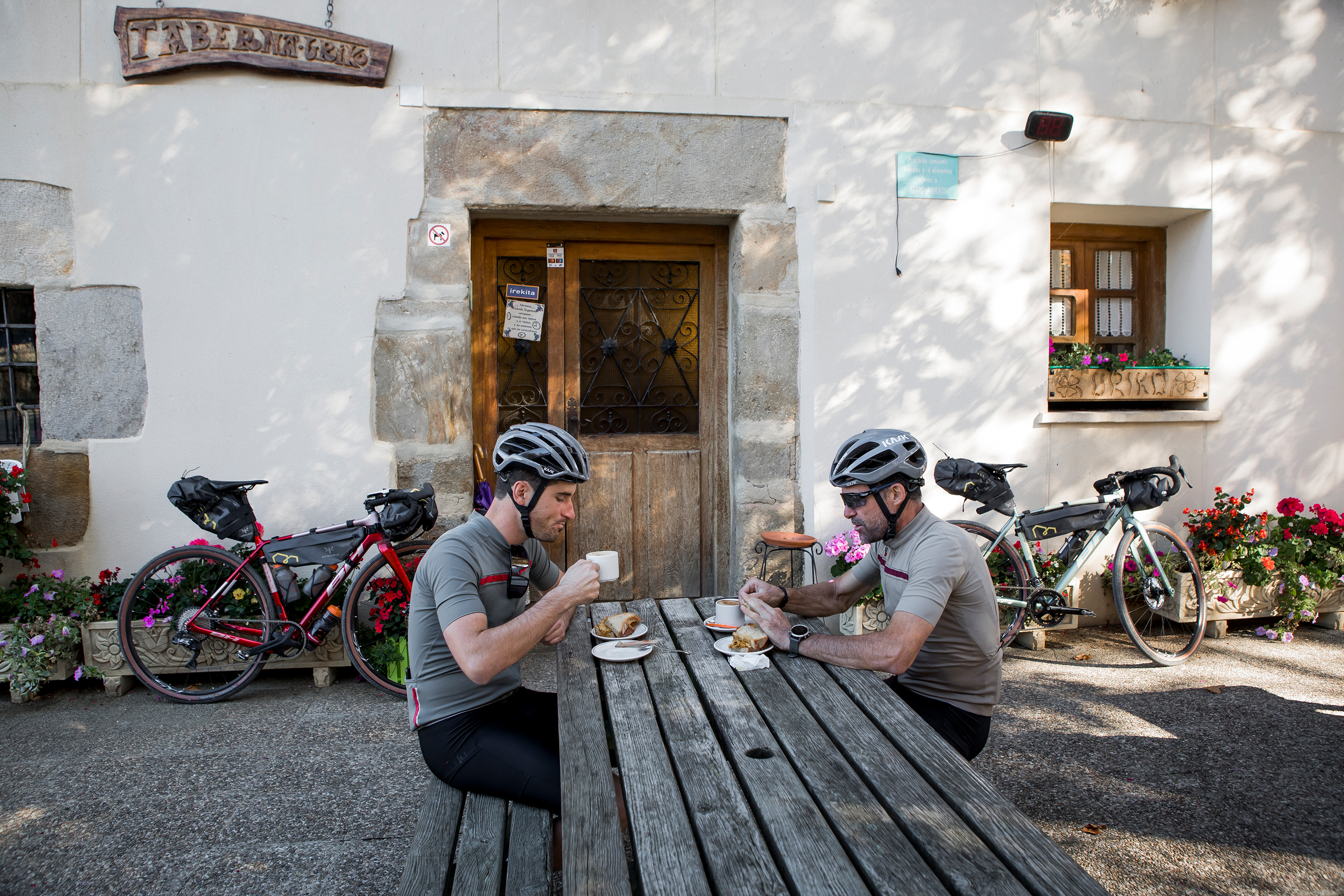

You can make up the route as you go along. Improvising is something I associate a lot with gravel cycling
Developments in the specific gravel biking equipment gave this type of cycling a boost, with its community of users growing exponentially. Feeling direct contact with the ground. Focusing on finding the best line, out of hundreds of possible lines on the track. “With a gravel bike I can go quicker on tracks without getting bored. I fell in love with the two sides of gravel cycling. The competitive side. Which reminds me of my first MTB races, where tracks dominated. The racer's technique is more important than it is on the road and you get that addictive sensation of speeding along the tracks. And the adventurous side. Being able to go out on your bike and just enjoy yourself.” You leave the house without a set route. Heavy traffic? Find the track that lets you get away from the cars, the noise and the fumes. An empty road? You can enjoy it, trouble-free. Feeling in flow? Head down that smooth, banked track, where you can fly around bend after bend and sprint for every metre. “You can make up the route as you go along. If you go out on an MTB, it's to ride in the mountains and if you go out on a road bike, it's for cycling on tarmac. With a gravel bike you can go out and, depending on what you fancy, do one thing or the other. Improvising is something I associate a lot with gravel cycling.”
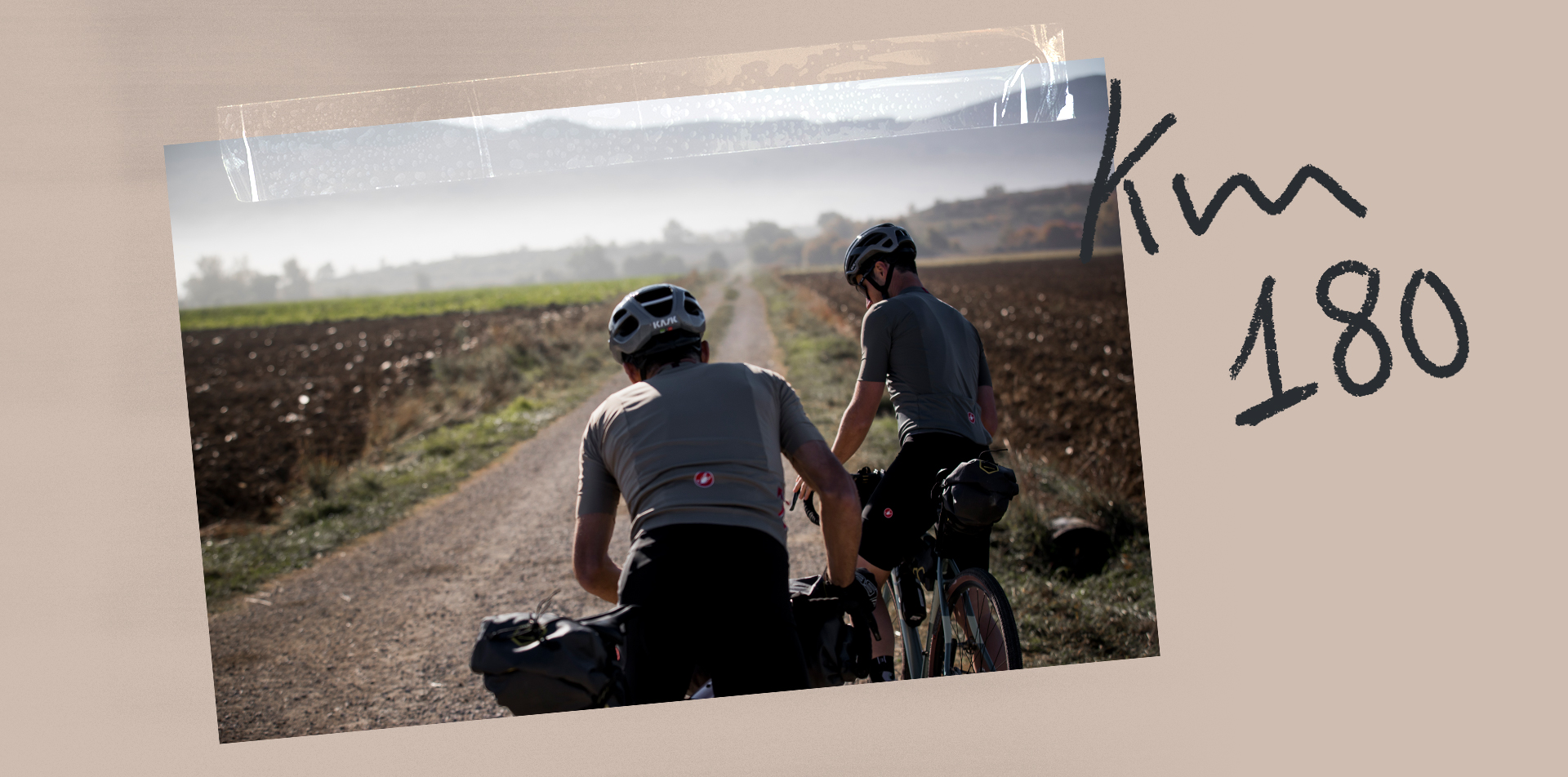
‘Gravel is just a fad’, years back, that is what people used to say. But time has been kind to it and every year you hear this said less and less. “It was a little bit niche in the beginning. But I knew that gravel cycling would grow in popularity. For the simple reason that, if it made other people feel like I did, it would appeal to them. It suits many kinds of users. From people who like the road to MTB cyclists. And the UCI has got involved, because they know that it is here to stay. Gravel cycling will make its niche with its two very different sides. The adventurous side for going on trips and exploring. And the competitive side, which keeps on growing. There is going to be a World Cup next year. With a gravel bike you can disconnect from the world and compete at the highest level.”

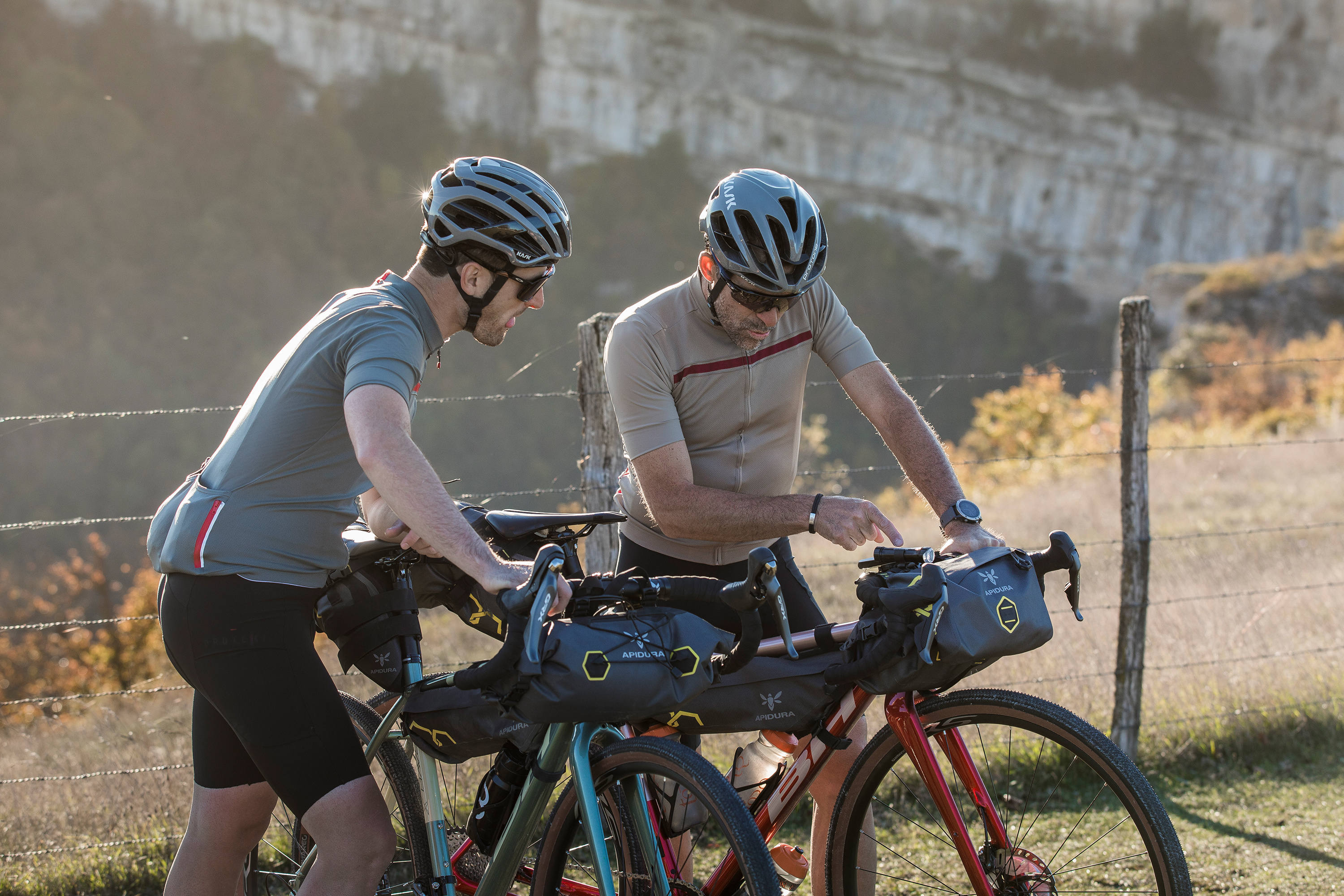
Which is my bike size?